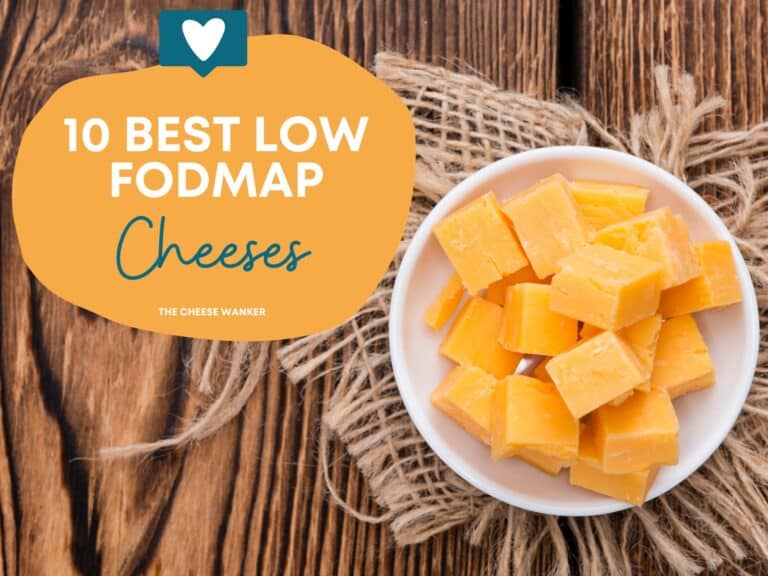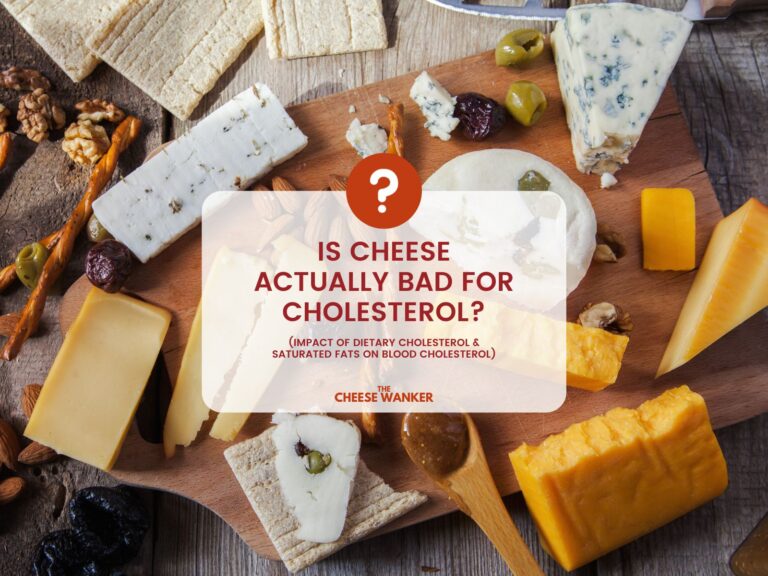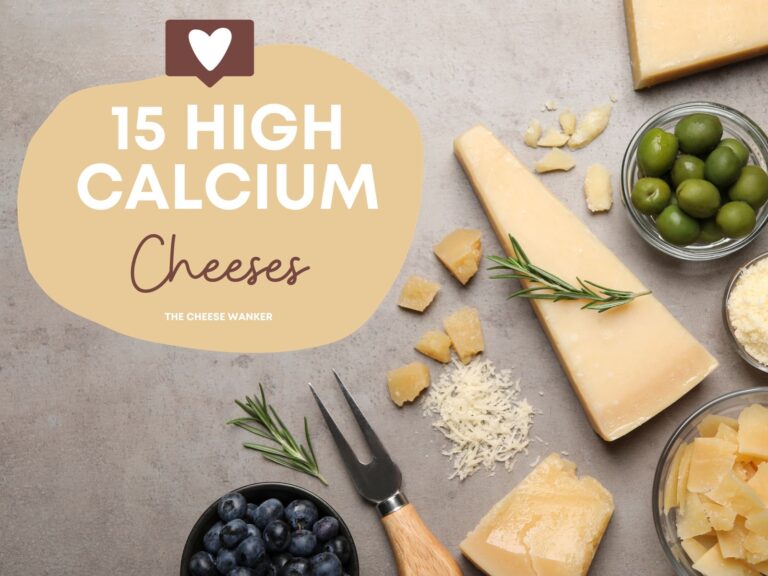The amount of fat in cheese varies tremendously depending on the type of cheese. While fat in our diet is an important source of energy, there are some fats that we need to be mindful of. Read on to learn more about the different types of fat. And discover our 15 best low fat cheeses.
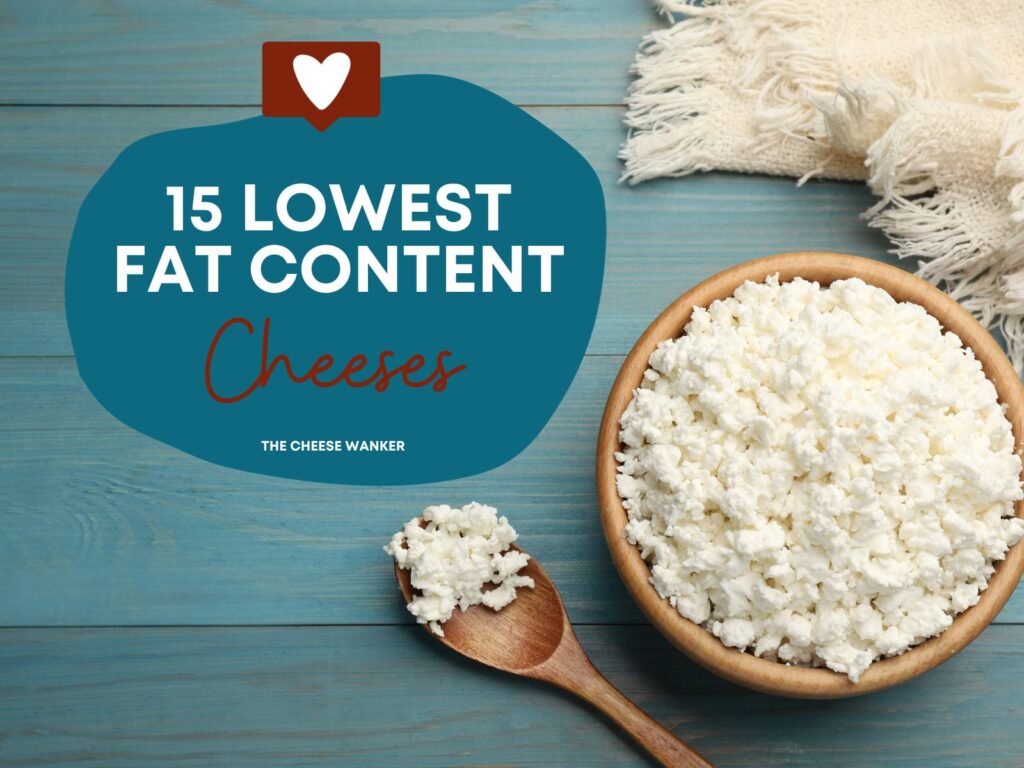
SEE ALSO: The Cheese Wanker’s extensive archive of cheese nutrition facts →
Different types of fat
All of the macronutrients, fat is often the one that gets vilified the most. Macronutrients include water, proteins, carbohydrates and fats. And, even though some fats can be harmful (we’ll get to that a little bit later), they are actually an essential source of energy, good fatty acids and insulation for our body.
Without a doubt, the different types of fat have different roles to play. Let’s break them down to have a closer look.
Saturated fat
Our first type of fat is saturated fat. This particular fat is generally solid or waxy at room temperature and comes largely from animal products. A high intake of saturated fats can lead to high levels of bad (LDL) cholesterol and increased internal inflammation.
Trans fat
Next, we have trans fatty acids. This type of fat is formed when a liquid fat is transformed into solid form by a process known as hydrogenation. Trans fats will increase your bad cholesterol and also lower your good (HDL) cholesterol. This is one type of fat to avoid at all costs and it is found in foods such as solid margarine, shortening and powdered coffee cream.
Unsaturated fat
The final type of fat in unsaturated fat. As a matter of fact, there are two subtypes that fall under this category, monounsaturated fats and polyunsaturated fats. These are both usually liquid at room temperature and can help lower your cholesterol levels.
Some examples of sources of monounsaturated fats include olive oil, nut butter, olives and avocado. On the other hand, you can get polyunsaturated fats from sunflower oil, salmon, chia seeds and walnuts.
What type of fat is in cheese?
Now that we’ve discussed the various types of fat, let’s get to the reason why you’re here. Where does cheese fit in all of this?
Well, most full-fat dairy foods contain a fairly high amount of saturated fats and some cholesterol. As a matter of fact, milk fat is about 70% saturated fat, 25% monounsaturated fat and 5% polyunsaturated fat³. And, of course, this profile is maintained in the cheese that is made from said milk.
As a result, if you are on a fat restricted diet, it might be best to keep your consumption of high fat cheeses to a minimum. Having said that, as with all things, balance is key. Indeed, you can’t cut fats completely out of your diet and expect to have the energy to go about with your life.
How much fat should I eat?
The RDI for fat in adults in 20%-35% of total calories. This equates to about 44 grams to 77 grams of fat per day if you’re on a 2000 calories a day diet².
Moreover, it is critical to try to keep your trans fat intake to zero and your cholesterol to less than 300 mg per day. Finally, you should aim for up to 20% of your fat intake to come from monounsaturated fat, and 10% from polyunsaturated fat.
Best low fat cheeses
Since we all agree that we can’t live a “cheeseless” existence, let’s have a look at some great low fat options.
For the purpose of this post, we are looking at “regular” cheeses. By that, we mean that we are not considering any cheeses that are sold as low-fat versions of traditional cheeses. Some examples of the latter are Low-Fat Cheddar, Low-Fat Mozzarella and Low-Fat Monterey Jack.
Quark (3 g)
Topping our list, we’ve got Quark. Quark is a type of fresh cheese made by adding lactic acid bacteria to fresh milk. Traditionally, cheesemakers in the Germanic, Baltic and Slavic regions of Europe made this fresh curd without using any rennet.
Cottage Cheese (10 g)
Cottage cheese is a type of fresh cheese made by curdling milk with an acid such as vinegar or lemon juice. It has a mild, slightly tangy flavour and a creamy, lumpy texture. Due to its low fat content, cottage cheese is a popular ingredient in many dishes, including salads and dips.
Requesón (13 g)
Requesón is a whey cheese that finds its roots in South America. This mixed milk cheese (cow, goat and/or sheep) is the region’s take on Italian Ricotta. Unsurprisingly, it gets its name from the Spanish word requesón which means “made again from cheese”.
Ricotta (13 g)
Ricotta is a traditional Italian whey cheese that is most often made with cow’s milk. Originally, Italian cheesemakers would make this cheese using the leftover whey from producing cheeses like Parmigiano Reggiano.
This fresh, fluffy white cheese draws its name from the Italian word ricotta which means “twice cooked”. Indeed, this is a reference to its production method.
Bocconcini (18 g)
Bocconcini is a bite-sized pasta filata cheese that originates from southern Italy. Actually, it gets its name from the Italian word bocconcino which means “small mouthful”. This low-fat Italian cheese is the perfect cheese to elevate a simple garden salad.
Chèvre (18 g)
Chèvre, also known as goat cheese, is a type of fresh cheese made from goat’s milk. It has a tangy and slightly tart flavour with a soft and crumbly texture. Chèvre is a versatile ingredient that can be used in salads such as Salade de Chèvre Chaud (Warm Goat Cheese Salad).
Low-Moisture Part-Skim Mozzarella (18 g)
The results are in and, without a doubt, Mozzarella is America’s most popular cheese. This particular version of the Italian pasta filata is made with partly skimmed milk and has a lower moisture content. As a result, it is a spectacular melting cheese.
Feta (21 g)
Without a doubt, Feta is Greece’s most famous cheese. Indeed, its history goes back a few thousand years and the cheese first appeared in Homer’s Odyssey. Due to its relatively low fat content, Feta is a great addition to fresh salads.
Oaxaca (21 g)
Known locally as Quesillo, Oaxaca is a traditional pasta filata cheese that originates in Mexico. It was brought to the region by Italian Dominican monks who wanted to make Mozzarella. If you’re looking for a low-fat cheese to top your nachos, it does not get any better than Oaxaca!
String Cheese (21 g)
Midnight snacks do not get much better than String Cheese. If you’ve been hanging around us for a while, you will know that real String Cheese is a type of Mozzarella.
Queso Fresco (21 g)
Queso Fresco is a type of cheese that originated in Mexico and is made from cow’s milk. It has a mild and slightly savoury flavour with a crumbly texture.
Unsurprisingly, this unaged cheese is a very popular ingredient in Mexican cuisine. Indeed, you can use it in tacos, enchiladas and salads. Or even as a topping for grilled vegetables or fruits.
Neufchatel Cheese (21 g)
Not to be confounded with the French soft cheese Neufchâtel, Neufchatel Cream Cheese is a commercial cheese spread that is made in America and Australia. Compared to the famous Philadelphia Cream Cheese, Neufchatel has a lower fat content.
American Cheese (23 g)
Modern American Cheese is a type of processed cheese that is hugely popular in the United States and around the world. First developed in the 1910’s, this yellow cheese is made from a combination of Cheddar, Colby or some other similar cheeses.
Buffalo Mozzarella (23 g)
Mozzarella doesn’t get any better than the traditional form made with buffalo milk. Originally from Naples in southern Italy, this pasta filata cheese is referred to locally as Mozzarella di Bufala.
The Laughing Cow / La Vache Qui Rit (23 g)
There are very few foods that take me back to my childhood the way La Vache Qui Rit does. Also known as The Laughing Cow among anglophones, this commercial French spread is the ultimate spread on a warm crunchy baguette.
Did we miss your favourite cheese?
So, now you know which cheeses are lowest in fat. But remember, a balanced diet that contains appropriate amounts of fats, protein, carbohydrates and vitamins is best for your health.
Were you surprised to see Quark top the list? Were you expecting any other cheeses? Drop us a comment below.
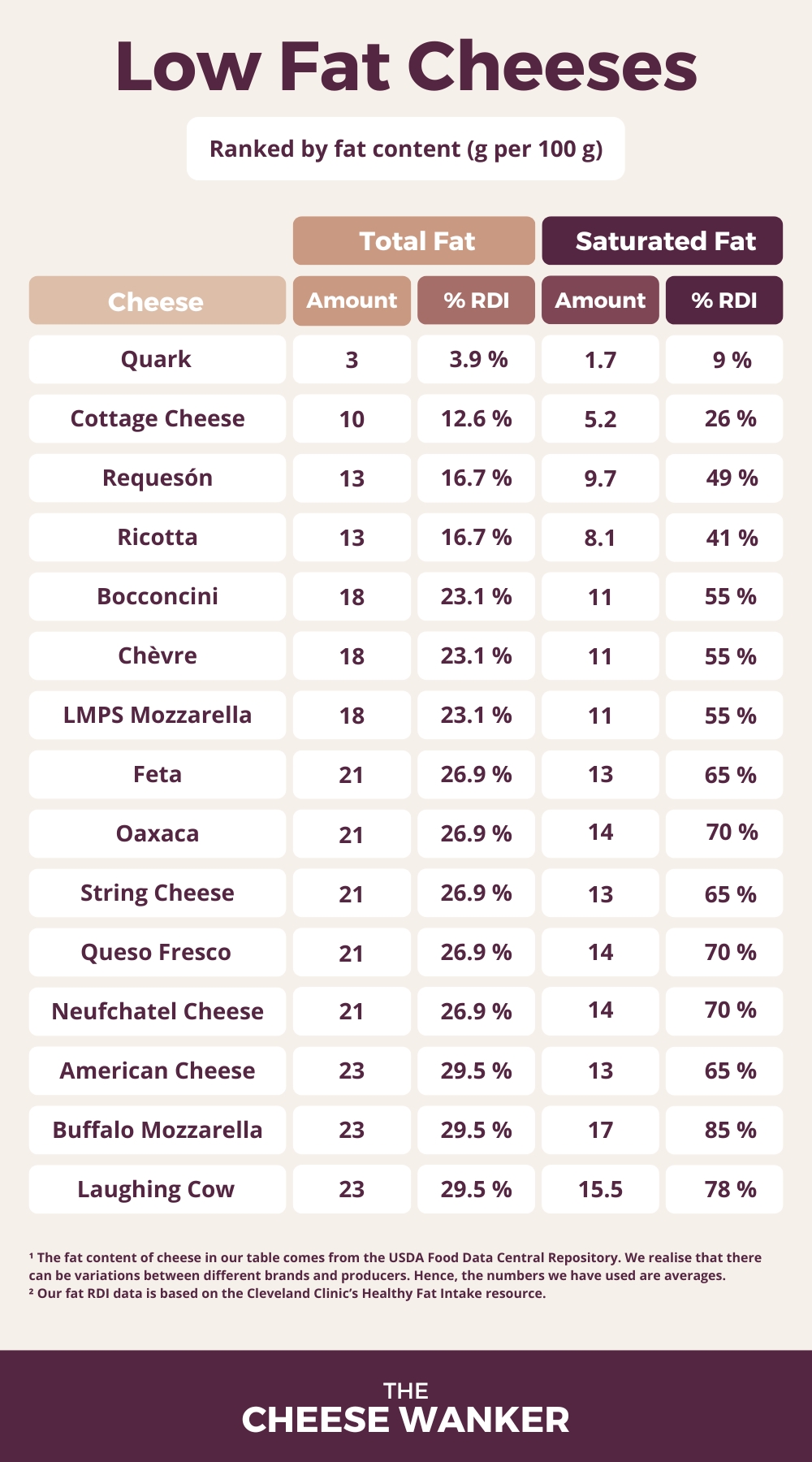
References
¹ The fat content of cheese in our table comes from the USDA Food Data Central Repository. We realise that there can be variations between different brands and producers. Hence, the numbers we have used are averages.
² Our fat RDI data comes from Cleveland Clinic’s Healthy Fat Intake resource.
³ Type of fat in cheese as per Harvard T.H. Chan’s The Nutrition Source.
